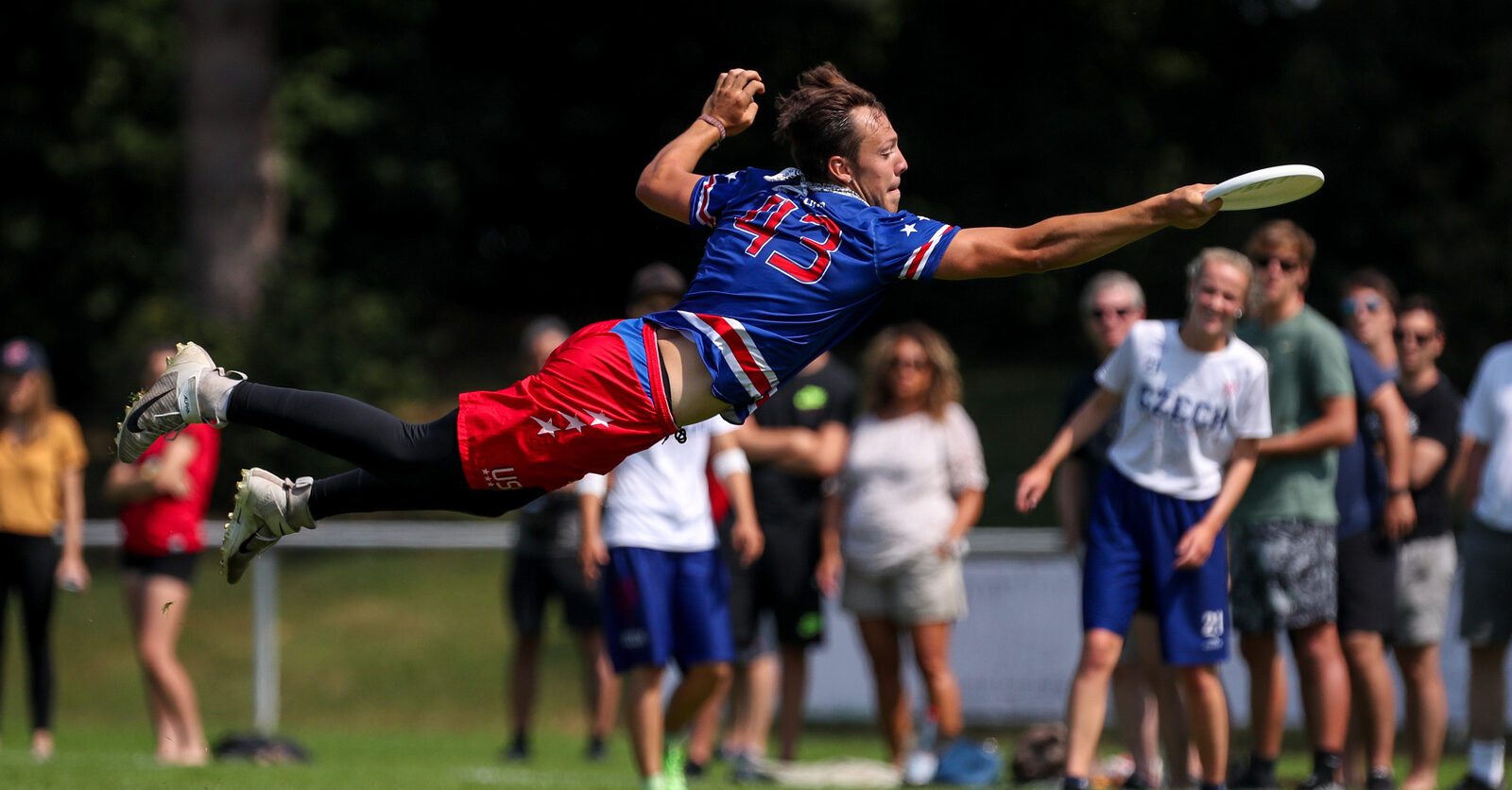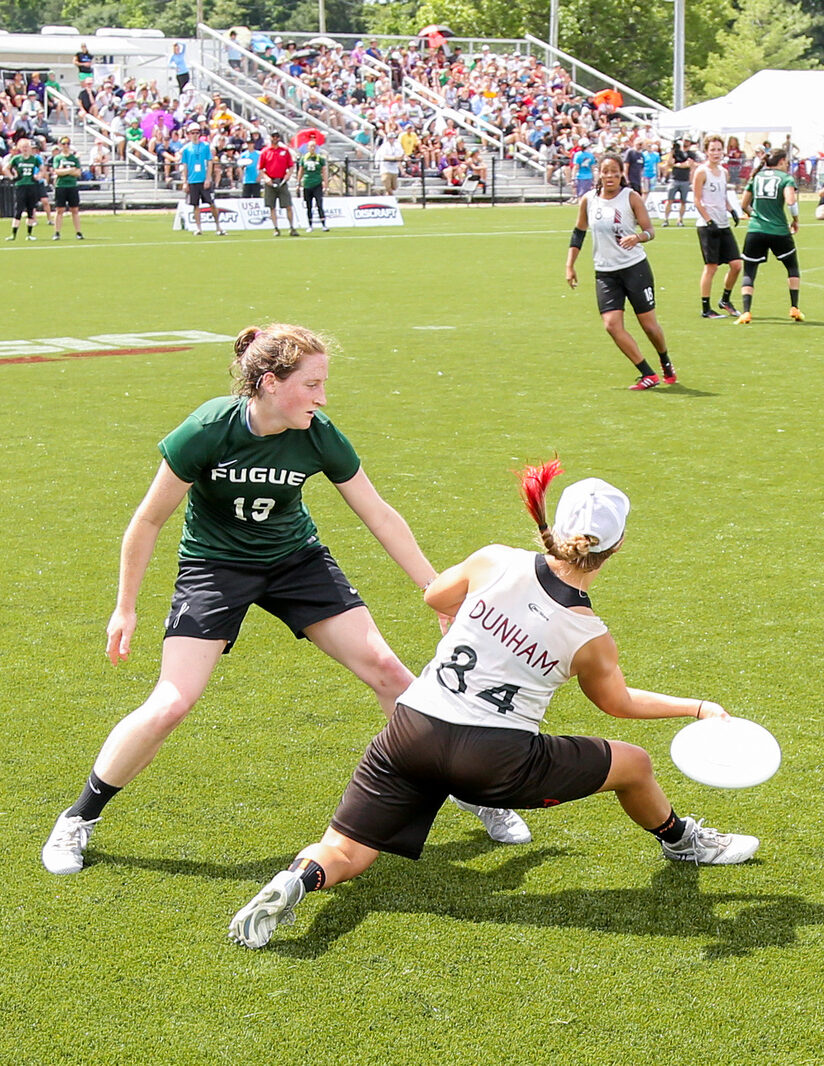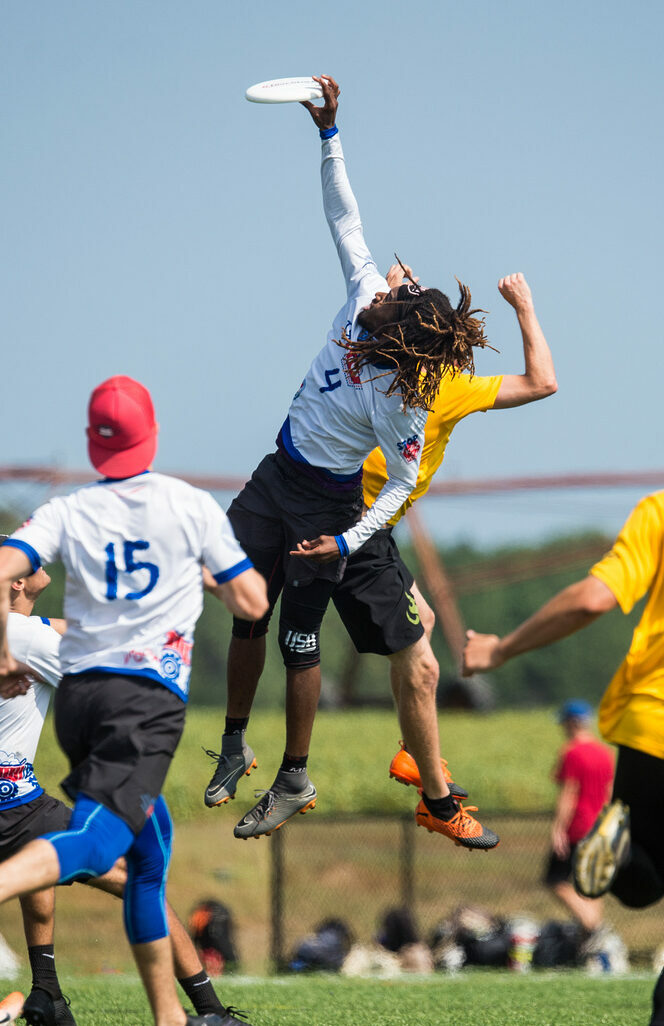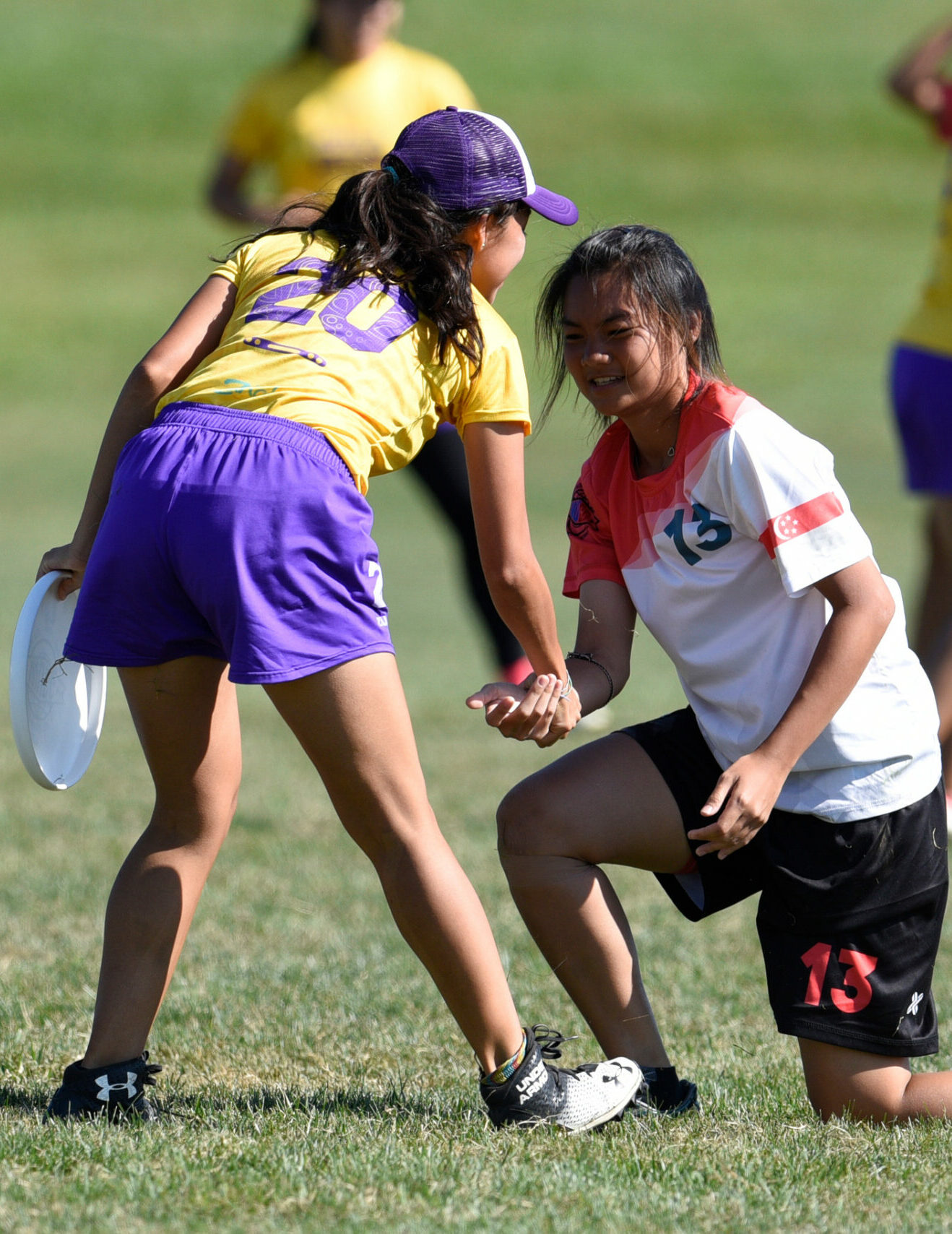Discover
Ultimate
What is ultimate?
This is
ultimate.
Watch for yourself the athleticism, beauty and joy of playing ultimate.
The Rules
How you play

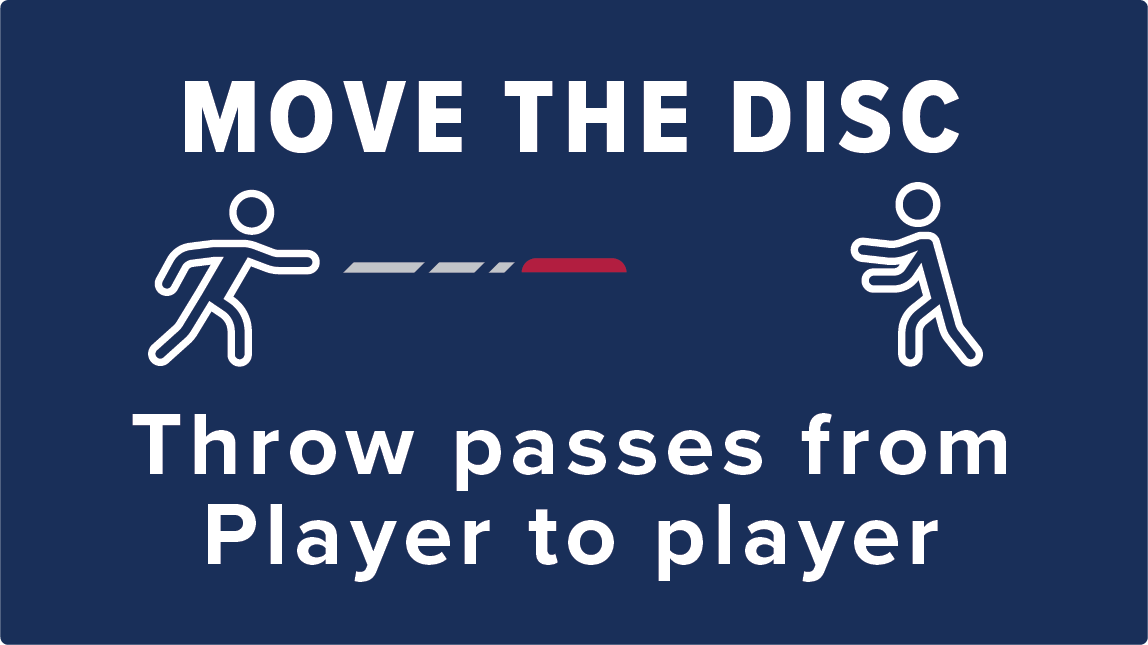
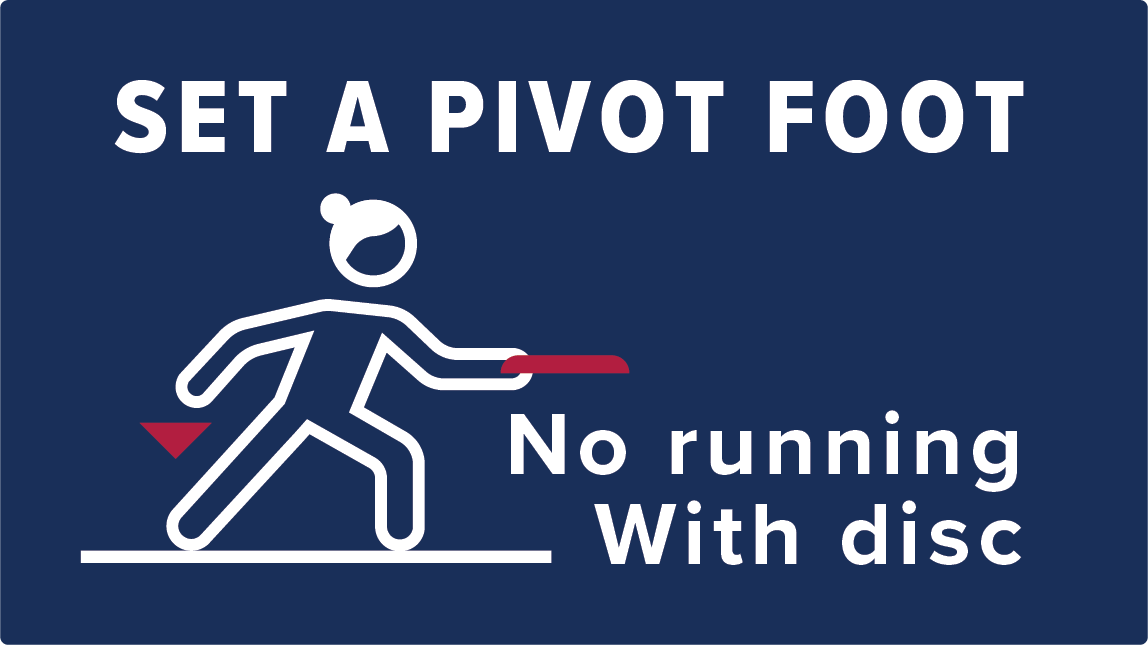
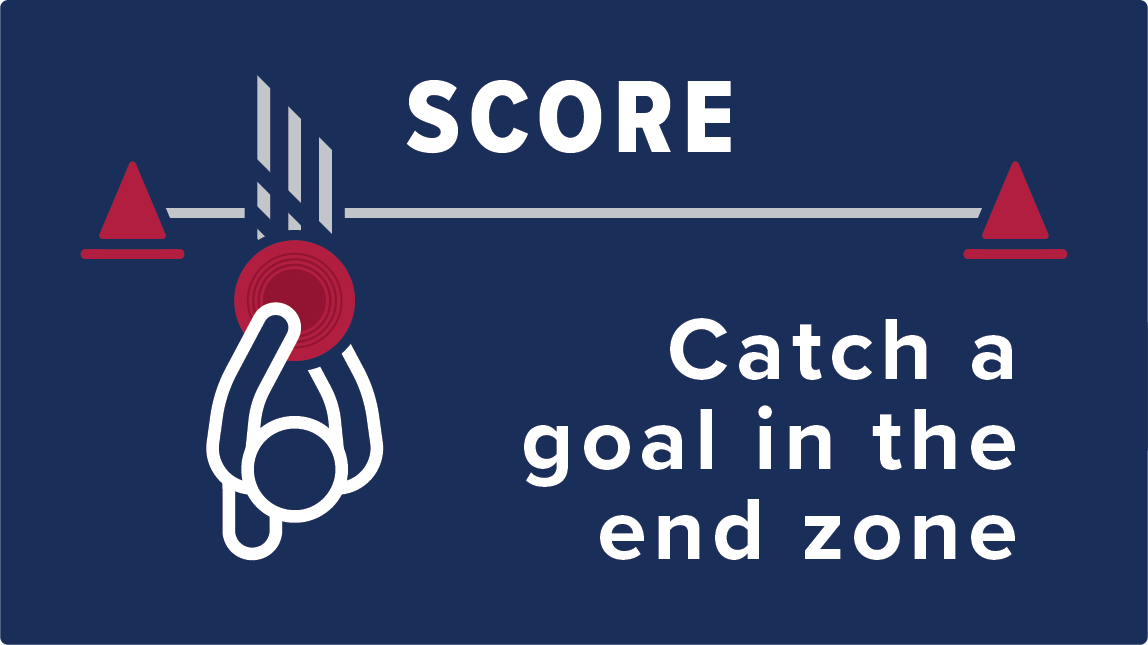

The Beauty of Ultimate
What Makes Ultimate So Great?
The Layout
Ultimate is perhaps the only sport in which “Getting Horizontal” is as common as getting vertical. The impressive and awe-inspiring sight never gets old as athletes routinely dive to make a catch on offense, or knock down an opponents pass on defense.
The Huck
A long, mostly full-field throw with pinpoint accuracy to a streaking cutter is a majestic and mesmerizing sight. A handler’s ability to apply the laws of physics, often times bending the disc along a curved flight path to a precise location, illustrates the skill of an elite thrower.
The Sky
The ability to sky your opponent to catch a 50/50 disc as it slowly floats in the air depends on a few factors like timing and position. But mostly it all comes down to who is the most explosive and can jump the highest.
Our values
What makes ultimate special
Community
A unique and committed community is one of the defining aspects of ultimate. Time and time again, athletes will tell you they came for the sport and stayed for the community. The joyous, welcoming environment brings people together and helps form lifelong bonds for those who compete with and against each other on the ultimate field.

Character
The main tenet of ultimate is Spirit of the Game – a concept that requires all players to know the rules, make their own calls and constantly exhibit respect for their opponents. Character is an essential part of the game – what you see and what you say matters.
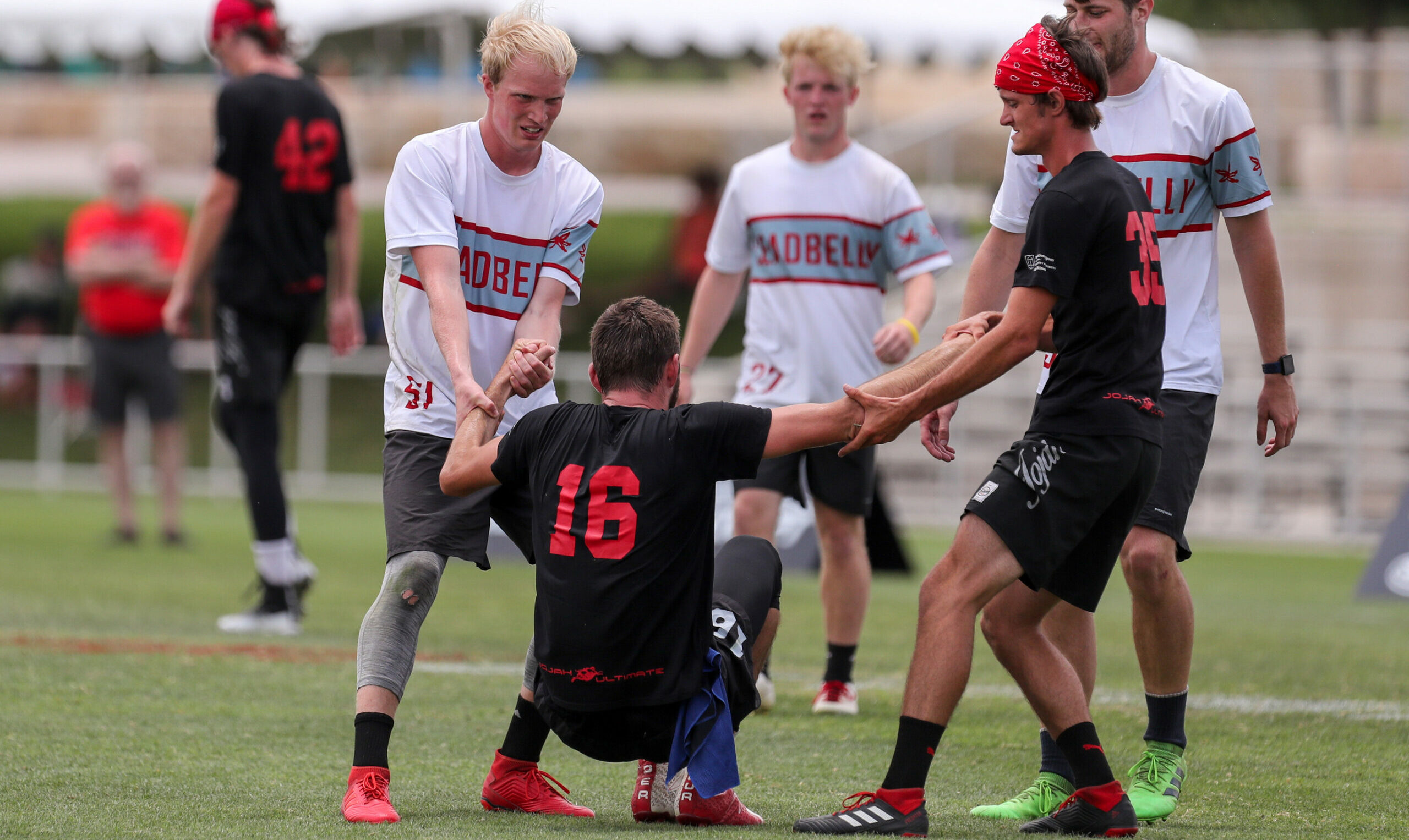
Competition
Ultimate is an excellent athletic outlet – running, sprinting, jumping, laying out and more are all major parts of the game. Athletes are able to experience it all at levels from local recreational play to world championships.
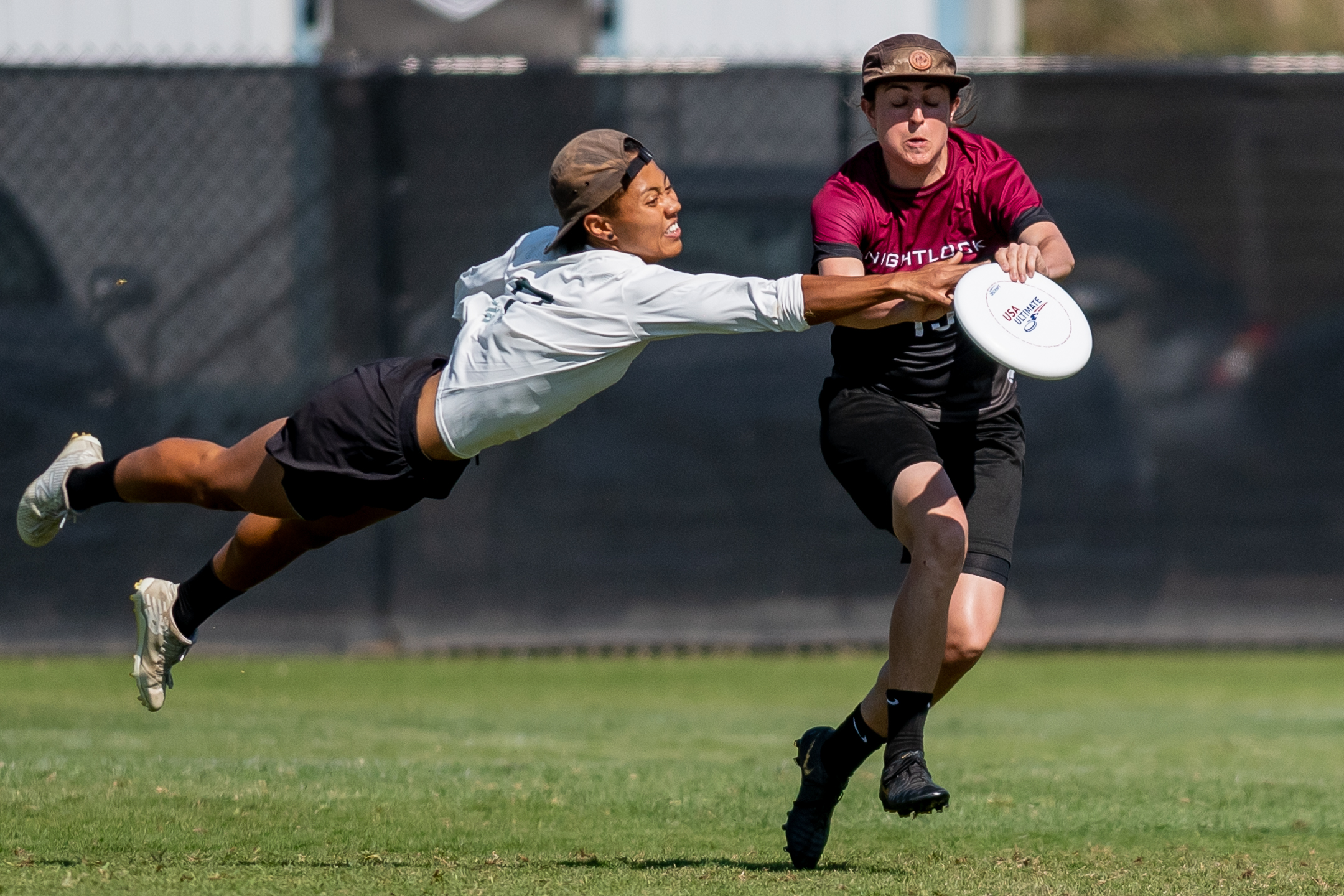
Ultimate Terminology
Get to know the lingo
Click on a term to learn more.
Occurs when a player leaves his or her feet and dives in an attempt to catch the disc or create a defensive block
A flick throw with a lot of outside-in bend, which causes the disc to rapidly descend at a vertical angle
When the team that starts the point on defense scores a goal during that point
A throw made to other side of the field from what is being forced by the marker
The spot where play may be initiated when a pull lands out of bounds, typically 15 or 20 yards from the front of the offense’s end zone and in the center of the field (yardage varies based on individual tournament rules); players have the option of making this call or taking the disc on the sideline closest to where it lands
A defensive score, occurs when a defender catches the disc in the opposing team’s end zone
The wall of defenders that surround the thrower in a zone defense; the wall typically consists of 3 players, but variations with 2 or 4 defenders are also common
Player typically responsible for making cuts in toward the thrower to receive the disc
Player typically responsible for spreading the defense and making cuts downfield and receiving long passes
Typically short pass thrown to reset the offense or move the disc toward the center of the field
Forehand, thrown outside, away from the handler’s body
Side of the field to which throws should be contained; the marker will attempt to take away throws to one part of the field and is said to be “forcing” throws to go up in a certain direction
A jump, throw, catch combination that occurs when the disc is out-of-bounds, but a player jumps from in-bounds, catches the disc and successfully throws it back in-bounds to a teammate
An overhead throw that starts above the shoulders where the disc turns over in the air and lands upside-down
Player position most often responsible for moving the disc, typically makes more throws than other players on the field
A long throw
Typically the defender guarding the player with the disc
A defensive decision to leave a designated one-on-one matchup, usually temporarily, to clog a cutting lane or help defend a player other than the original
The “kick-off” of each point in which the defensive team throws the disc from their own end zone down the field toward the offensive team
A throw released from locations similar to that of the flick and literally “pushed” forward usually by using the pointer and middle fingers for force and spin
An upside-down throw usually released from near shoulder height
The 10-second count for which a player is allowed to maintain possession of the disc; the opposing, defensive player must count the 10-seconds aloud; a “stall” occurs if the disc is held for more than the 10-second count
Occurs when a disc is knocked out of a player’s hands after they have stopped rotation and achieved possession
A throw usually following a dump pass that moves the disc from one side of the field to the other
What makes ultimate unique
Spirit of the Game
Spirit of the Game is one of the founding tenets of ultimate. It means the responsibility for fair play lies with the athletes. Every player has to know the rules and is empowered to make their own calls.
Differences on the field are resolved by the players themselves, helping establish mutual respect and trust between opponents. Spirit of the game develops communication and conflict resolution skills and inspires self confidence – both on and off the field.
Find playing opportunities in your local area
Wanna play?
A Brief History of Our Sport
50 Years of Ultimate
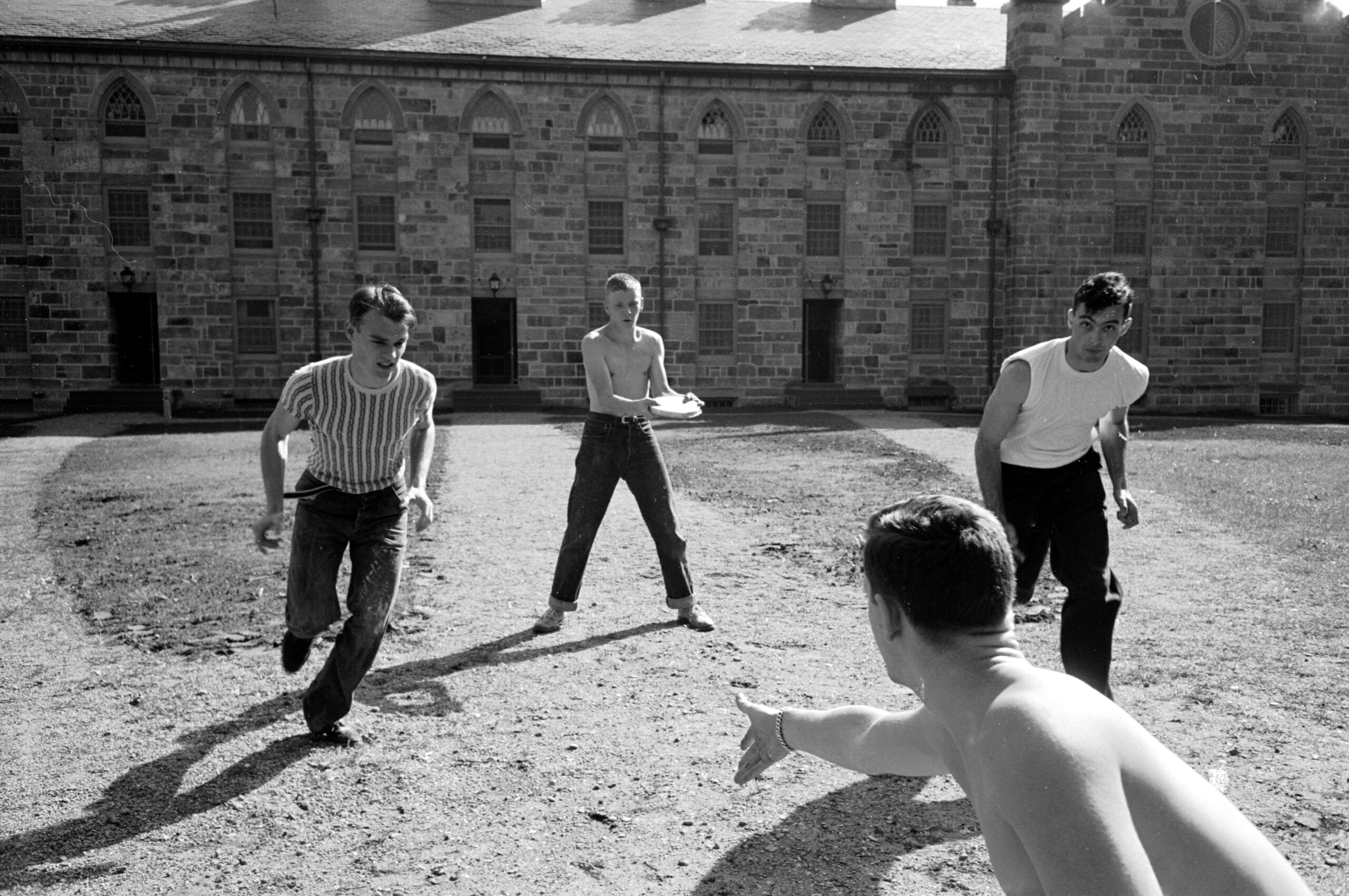
Aceball at Kenyon
Students at Kenyon College create and play Aceball, a team sport using a flying “disc” – a cake tin.
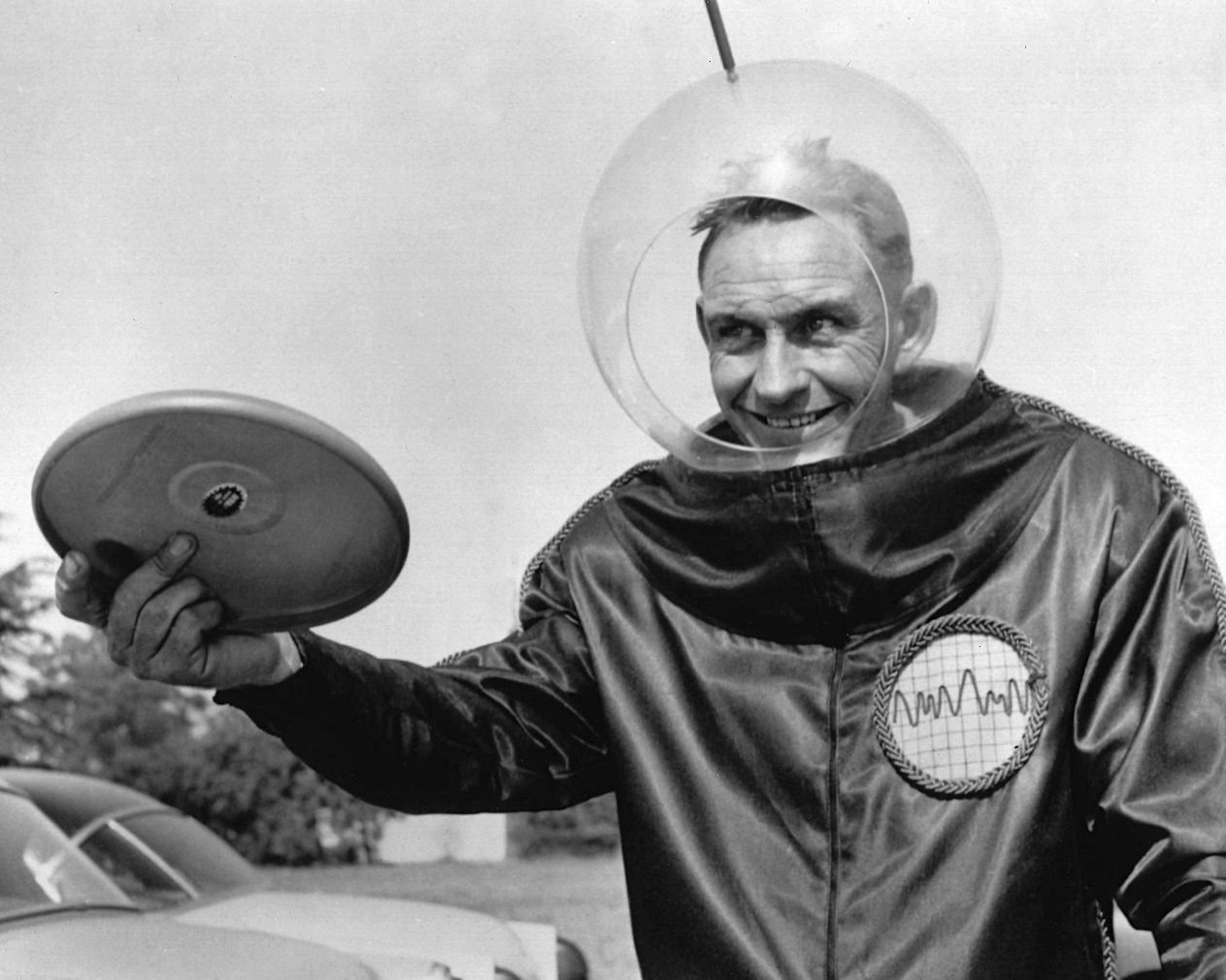
Invention of the Pluto Platter
Fred Morrison creates the Pluto Patter, the archetype of all modern flying discs. After selling the rights to Wham-O, the Pluto Platter becomes the Frisbee.
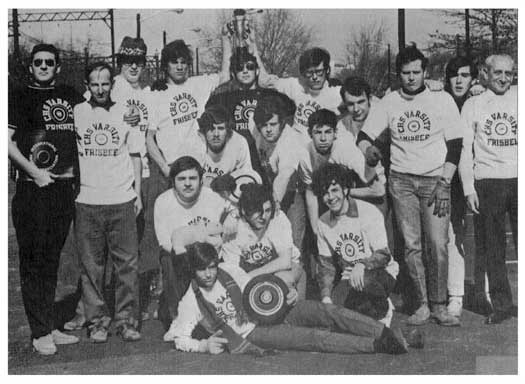
Ultimate is Invented
A group of students from Columbia High School invent the ultimate sport in Maplewood, N.J.
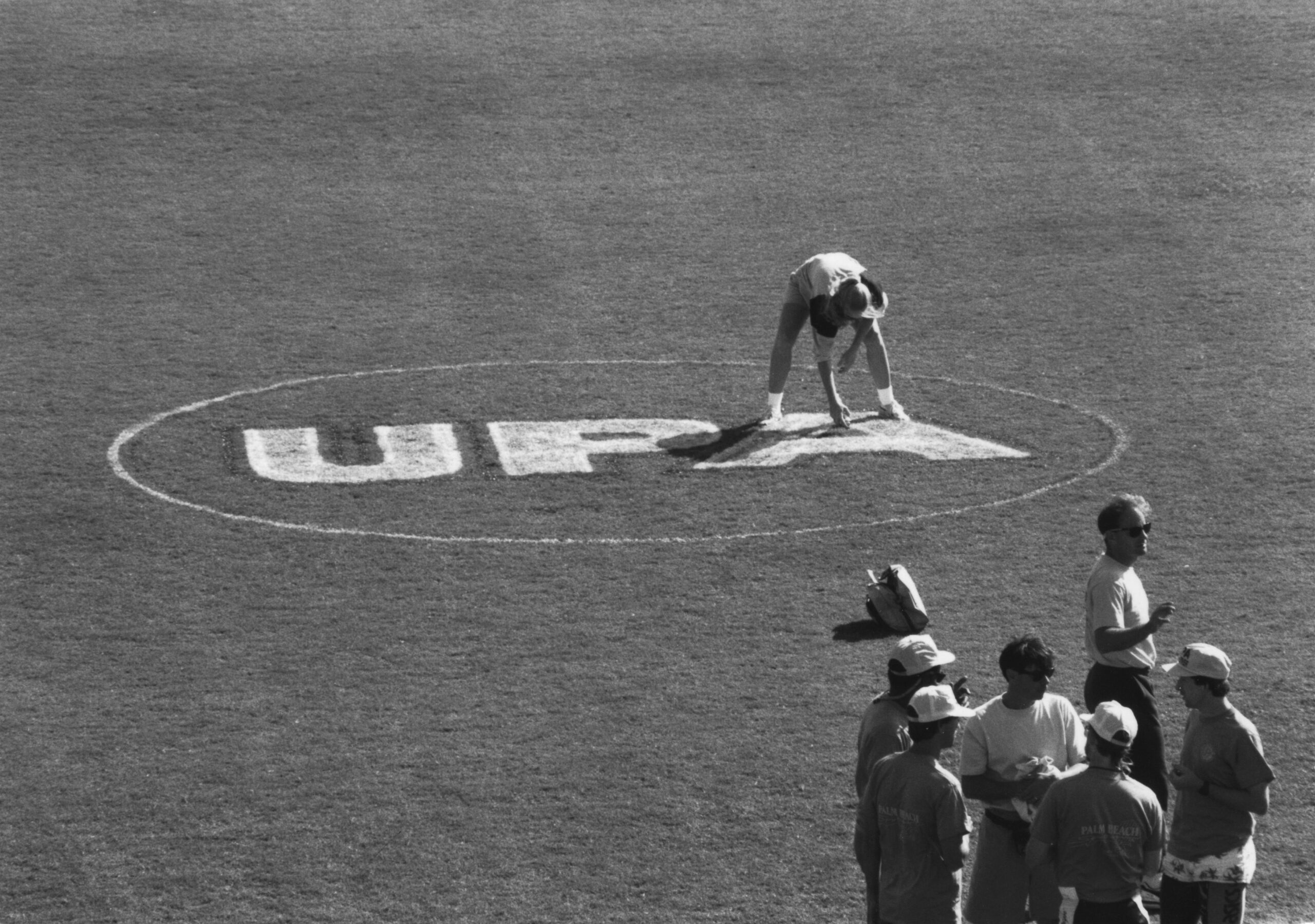
Ultimate Players Association Founded
The Ultimate Players Association, the precursor to USA Ultimate, is founded by Tom “TK” Kennedy in Santa Barbara, Calif.
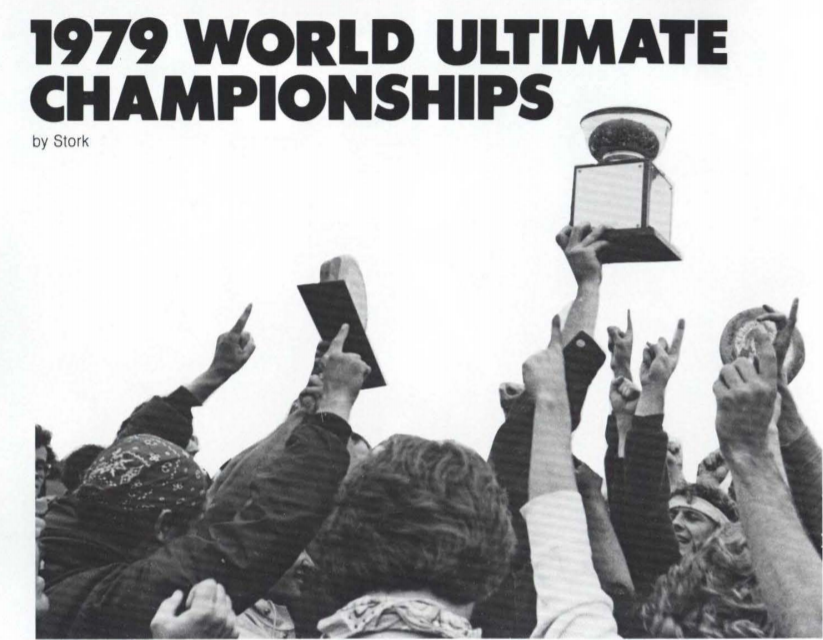
First Club Championships
The first UPA Club Championships is held with five men’s teams in State College, Pa. Glassboro takes home the title.
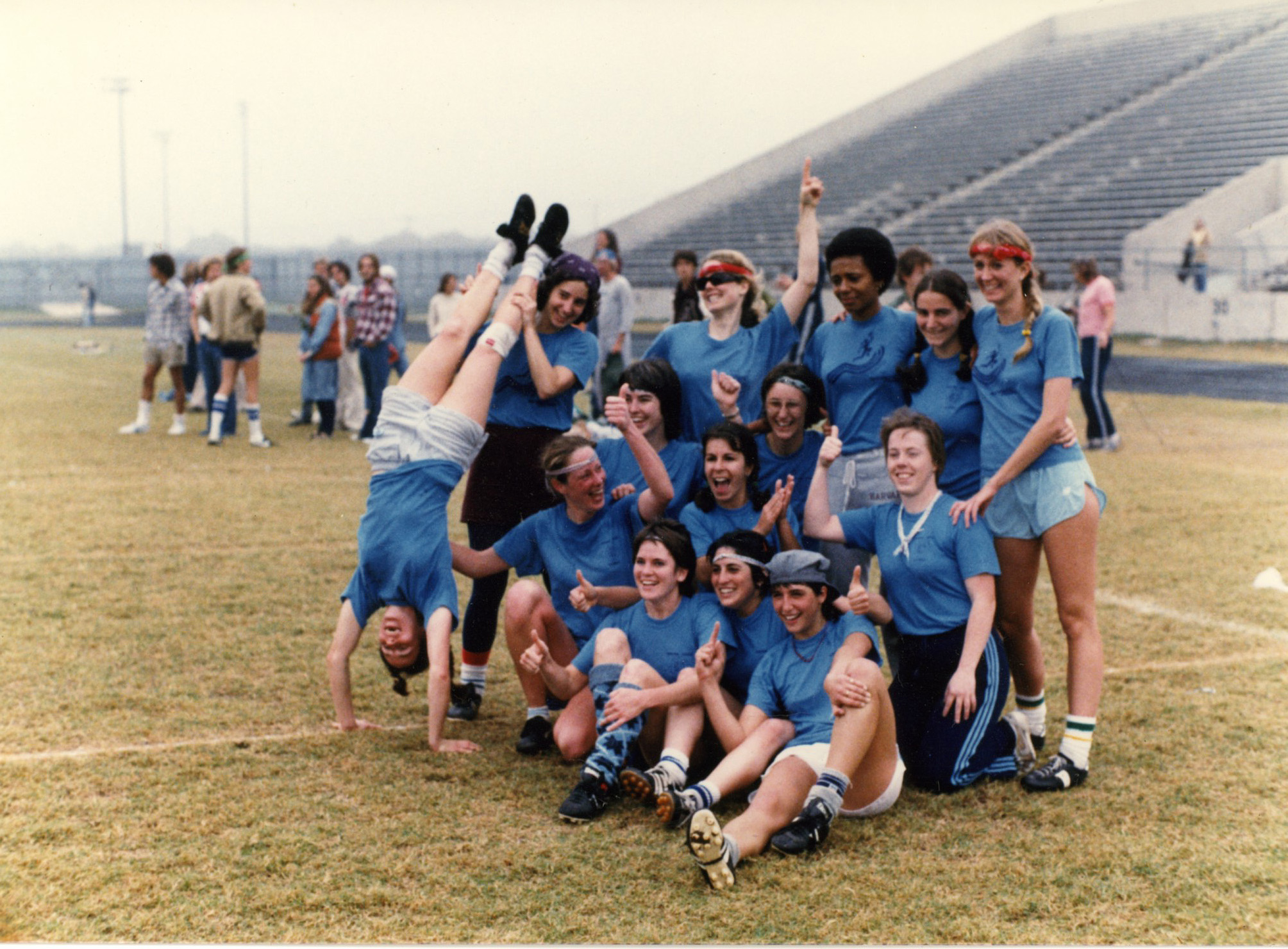
Women's Division Founded
The women’s division is added to the UPA competition structure, with Boston B.L.U. winning the first women’s title.
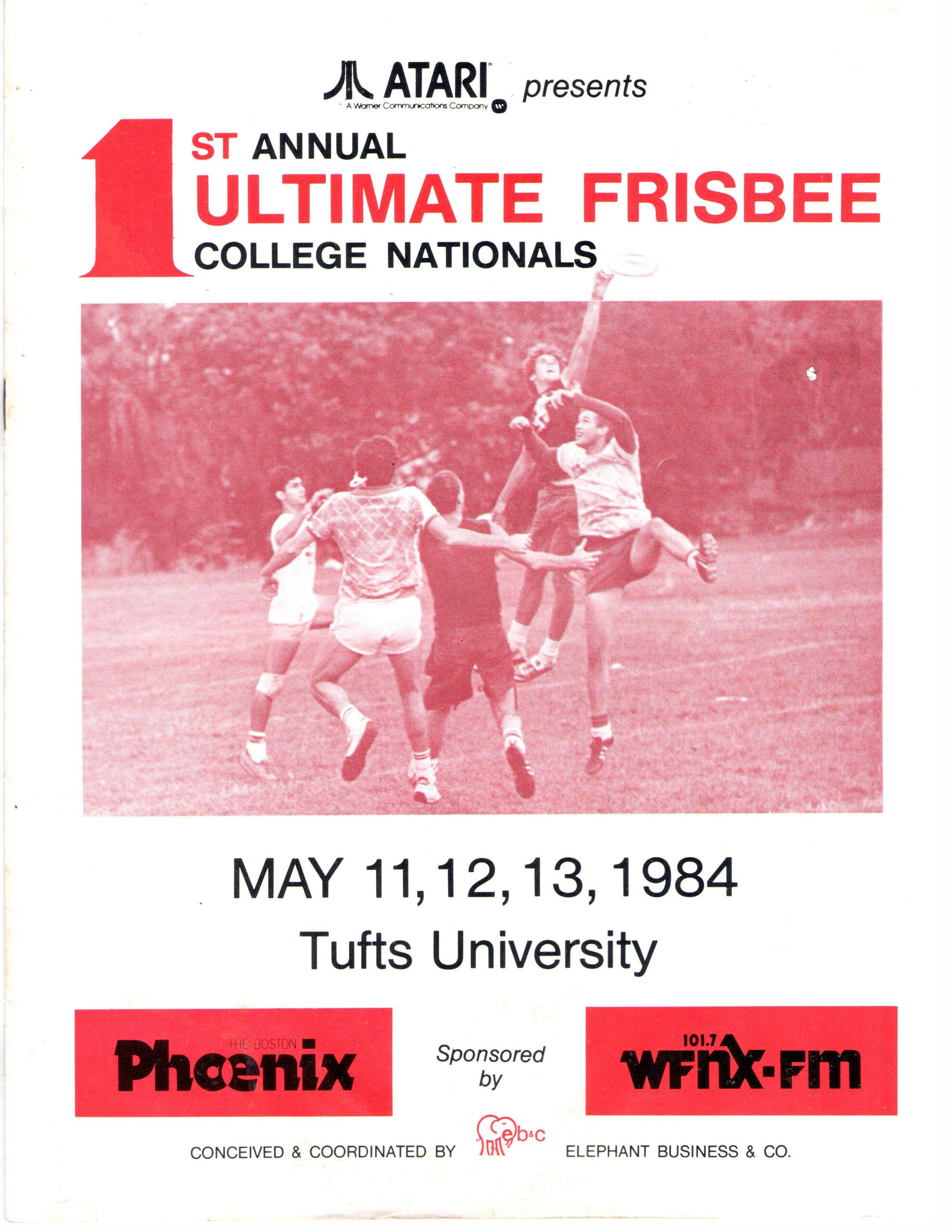
First College Championships
Ultimate competition continues to expand with the addition of the Men’s College Championships. The women’s division is added in 1987.

WFDF Founded
The World Flying Disc Federation (WFDF) is founded to serve as the sport’s international federation.
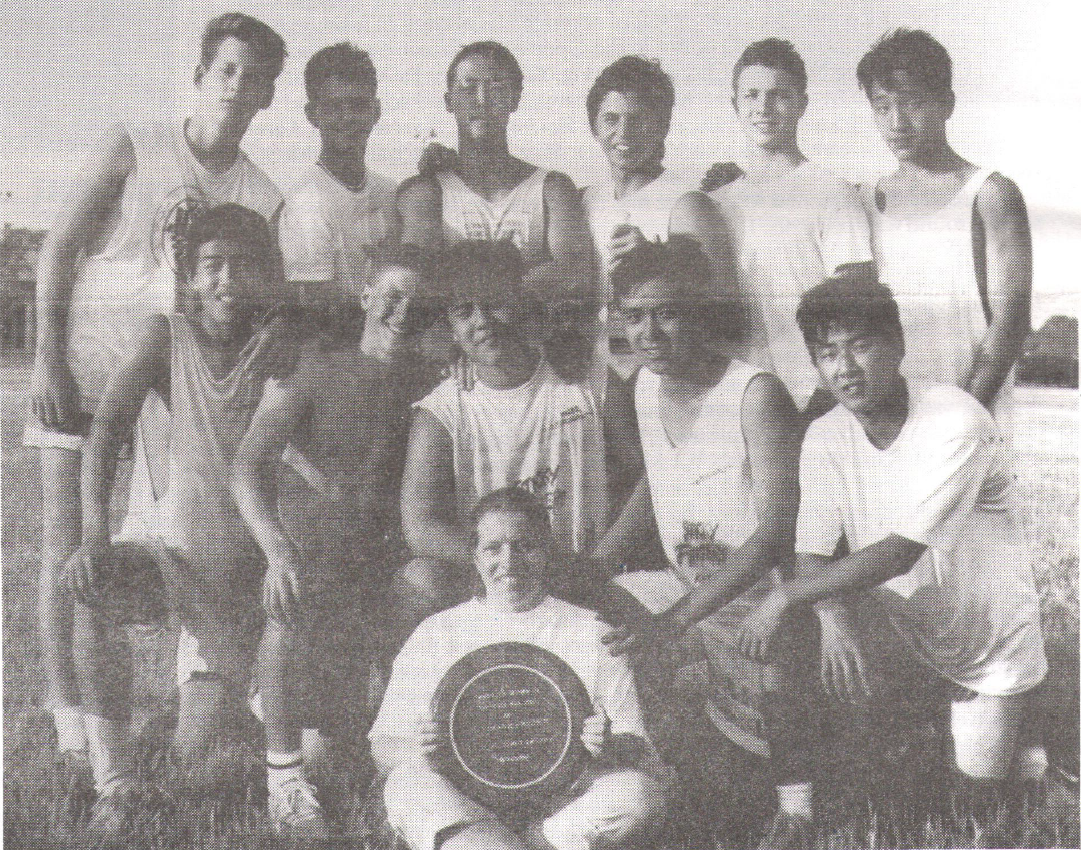
First Junior Nationals
Ultimate expands to the youth division and hosts the High School Championships. Eleven open teams compete in the inaugural event; Bronx Science takes the title.
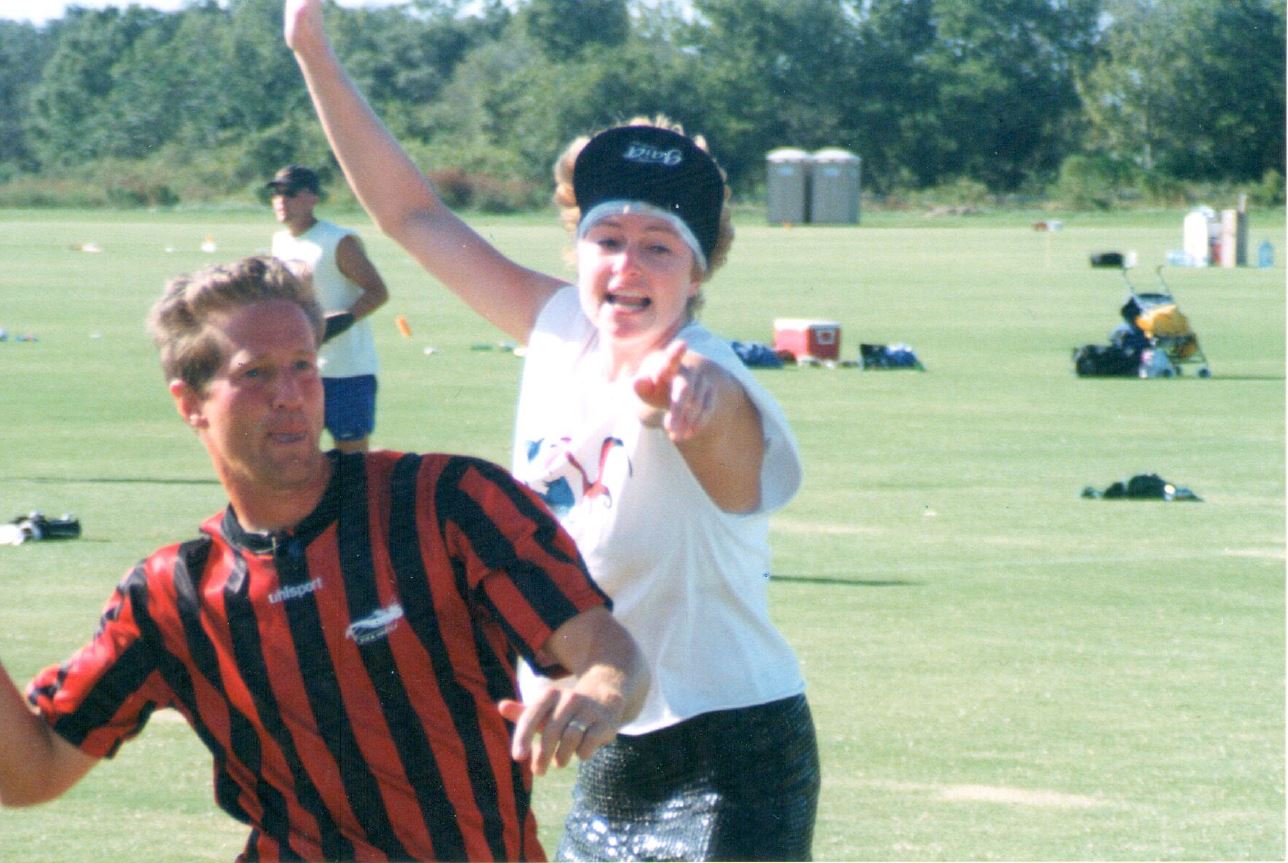
Mixed Division Founded
The mixed (co-ed) division is founded and holds its first Club Championships event.
Boston Death of Glory captures its sixth consecutive club championship.
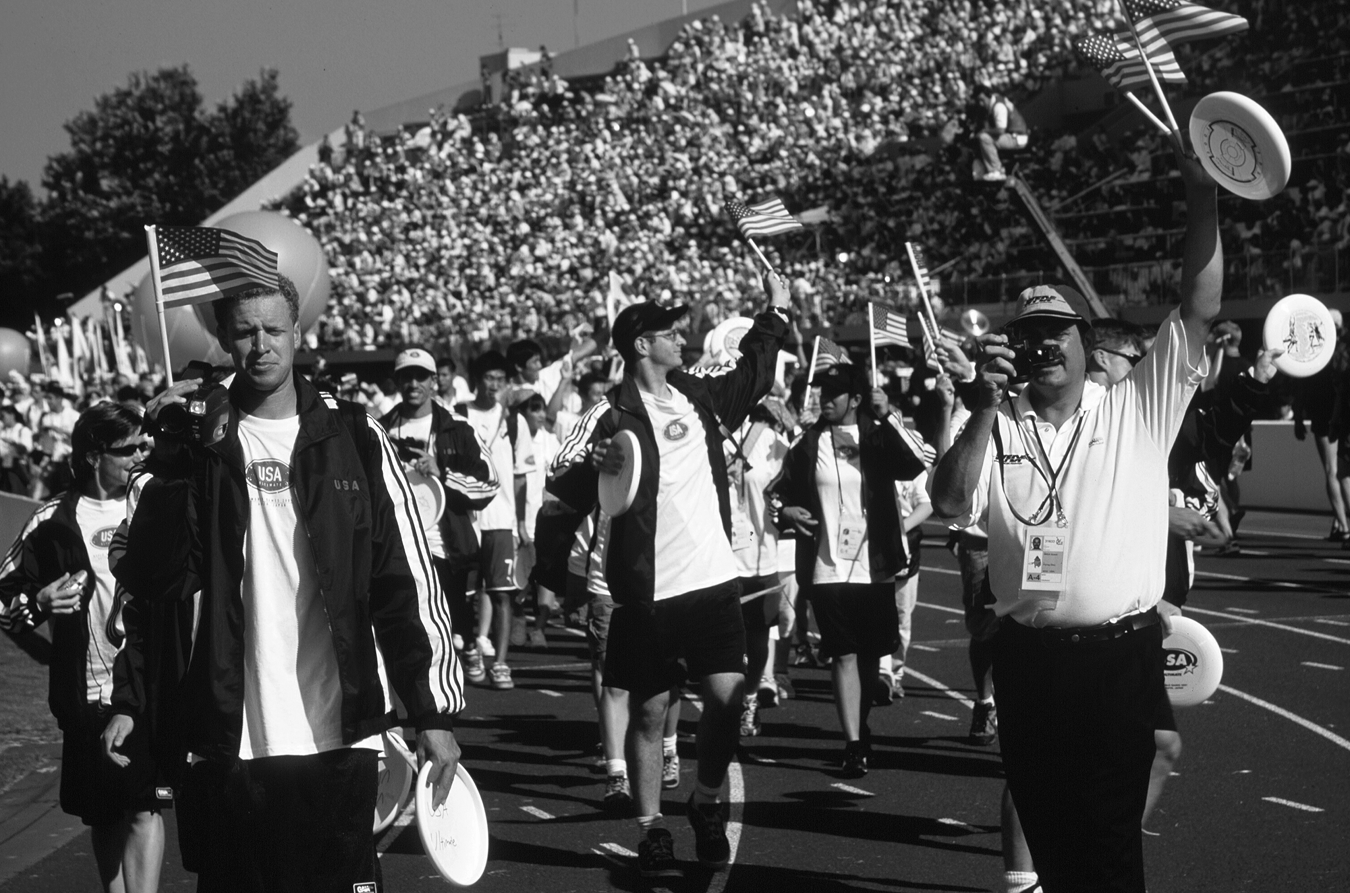
Ultimate Added to World Games
Expanding its international influence, ultimate is added to the World Games in Akita, Japan.
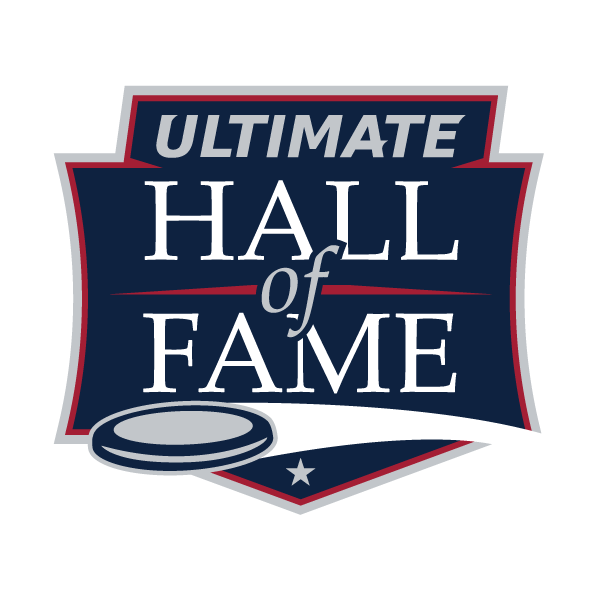
Ultimate Hall of Fame Established
The Ultimate Hall of Fame is established to honor outstanding ultimate players and contributors to the sport.
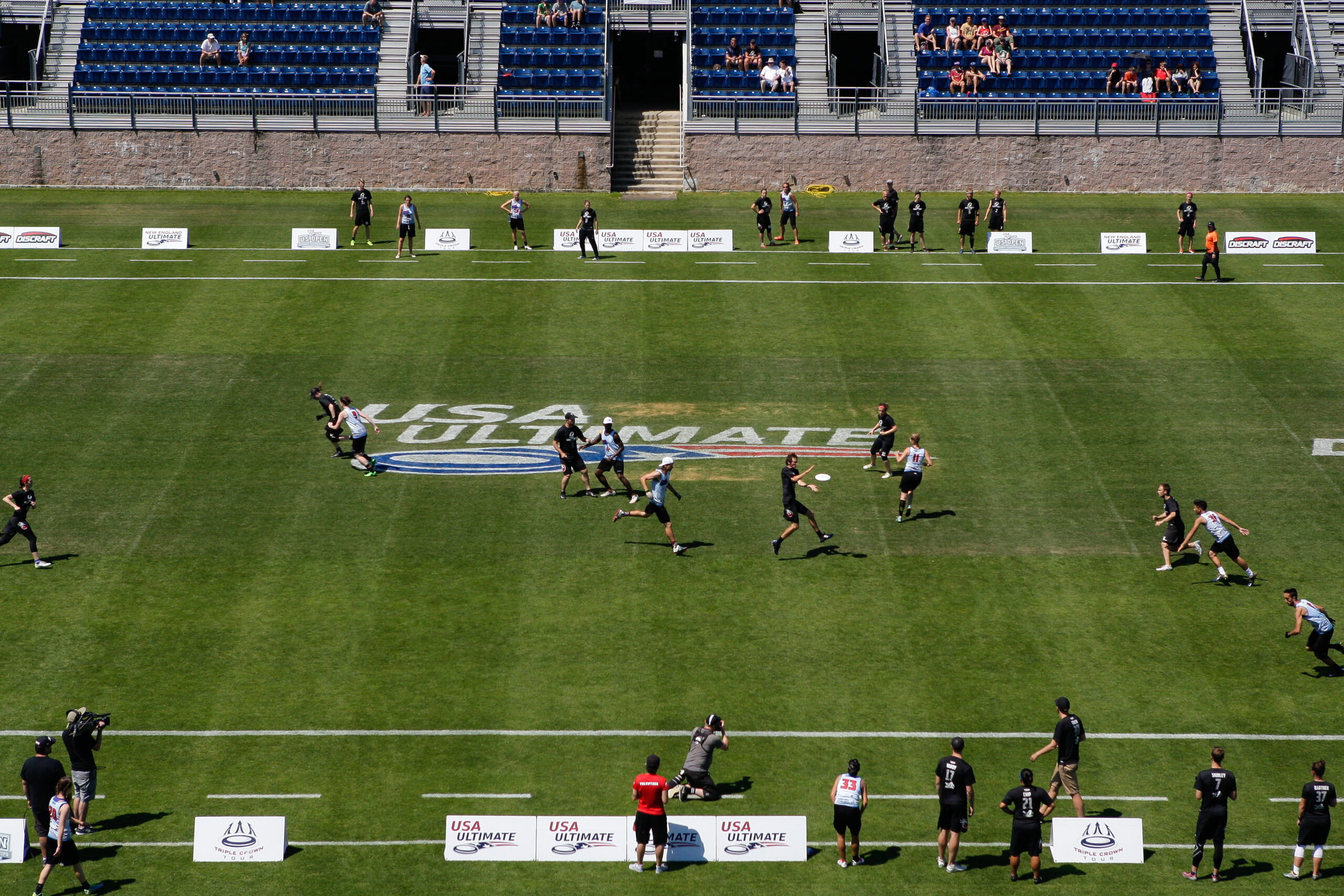
UPA Becomes USA Ultimate
To better align with the Olympic Family, the Ultimate Players Association rebrands as USA Ultimate.
San Francisco Fury captures its record-breaking seventh consecutive club championship.
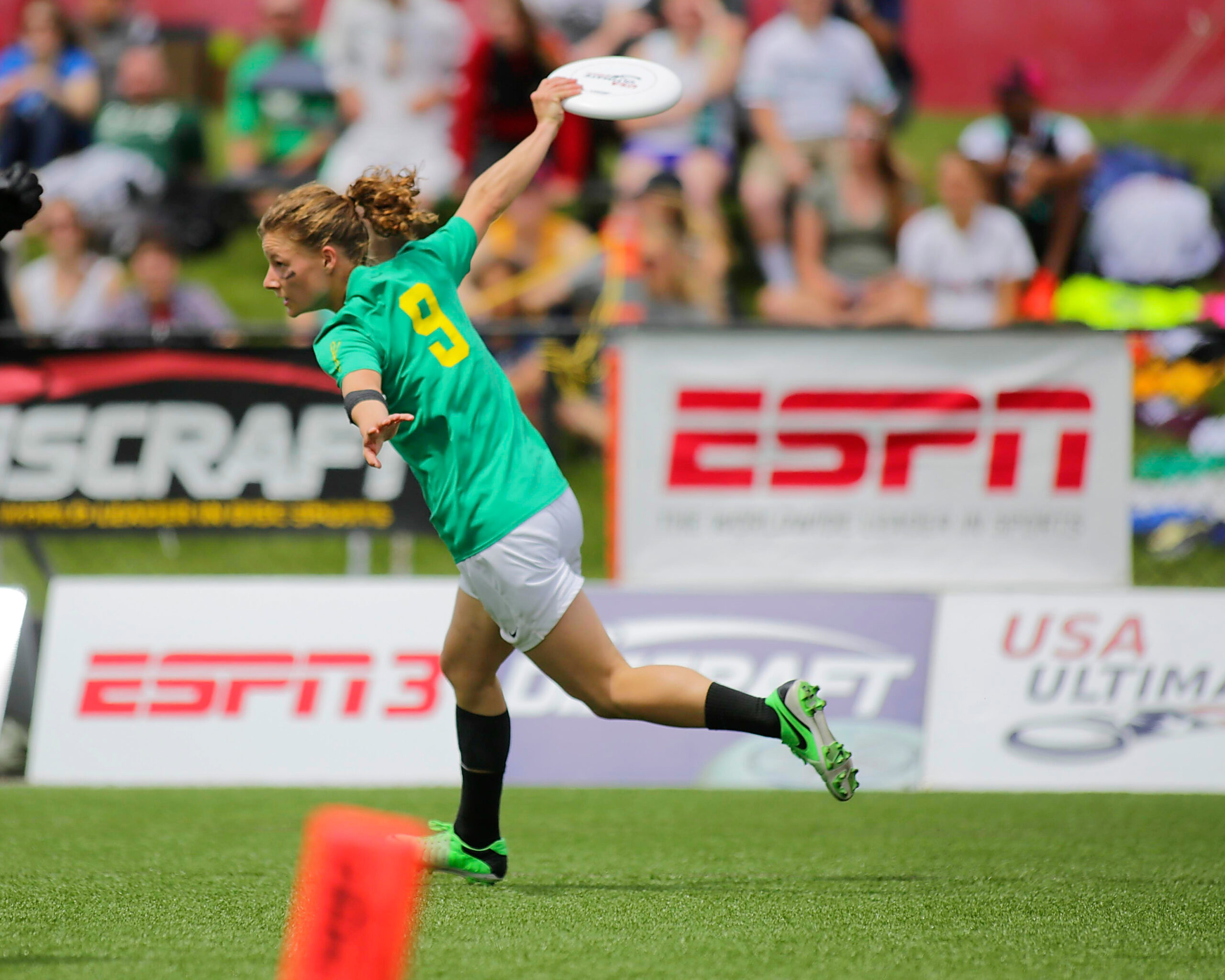
First Major Television Broadcast
Ultimate makes its debut on the ESPN family of networks at the 2013 College Championships.

Ultimate Recognized by USOPC
Ultimate officially becomes part of the Olympic Family when the United States Olympic and Paralympic Committee recognizes USA Ultimate.

WFDF Recognized by IOC
The World Flying Disc Federation is recognized by the International Olympic Committee, continuing to pave the way toward inclusion on the Olympic Program.
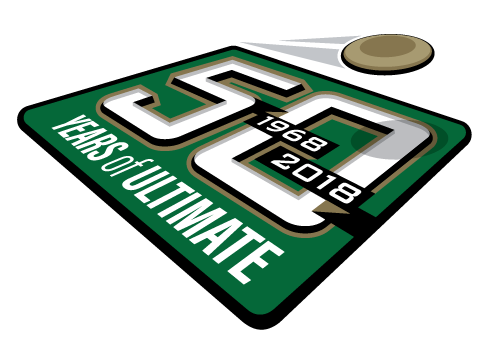
50th Anniversary
Ultimate celebrates its 50th anniversary.
Ultimate across the world
Where We Play

With ultimate being a year-round sport, including a college season that begins in January, practicing in the snow is not uncommon, especially for teams from the north like Bates College in Lewiston, ME.
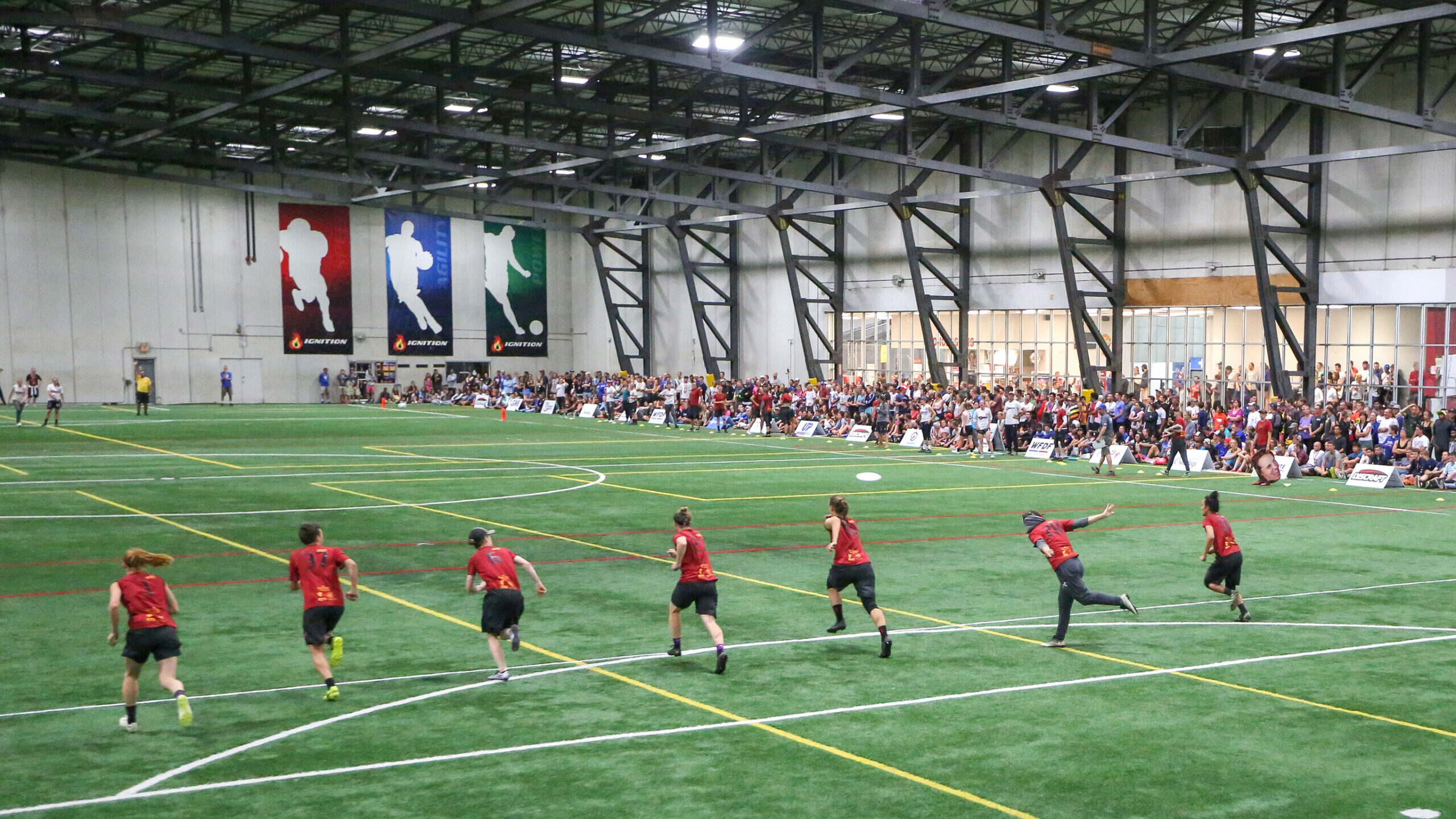
The 2018 WFDF World Ultimate Club Championships in Cincinnati were moved indoors because of thunderstorms.

A little mud doesn’t stop an ultimate game as teams play on at the Inter-JC Championships in Singapore.

The inaugural USA Ultimate Beach Championships in 2015 stretched up and down the shores of Virginia Beach.

San Diego hosted the 2018 USA Ultimate National Championships as the sport celebrated its 50th anniversary.
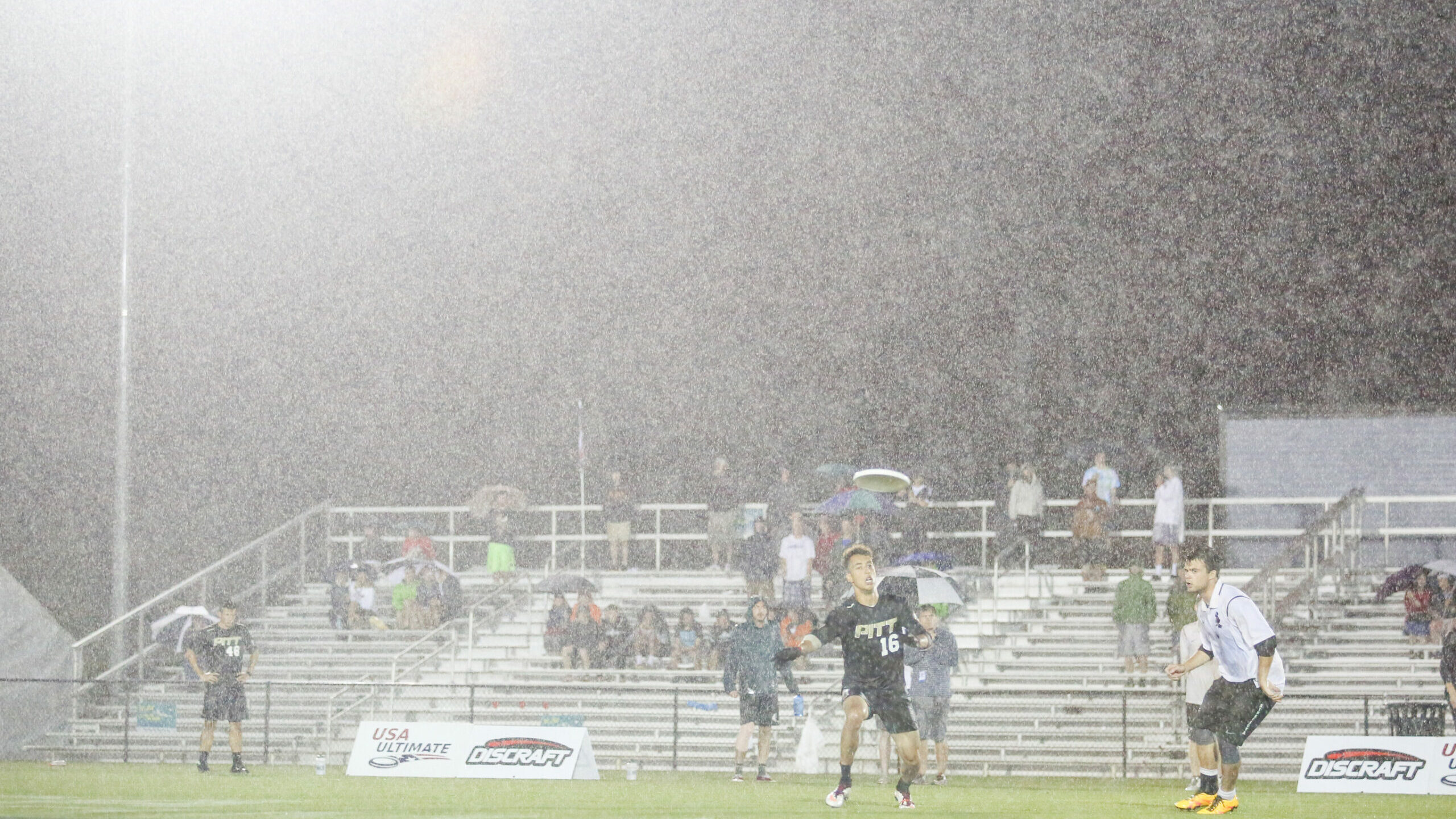
At the 2016 College Championships in Raleigh, NC, weather delays pushed the national semifinal between Minnesota and Pittsburgh into the early morning hours.
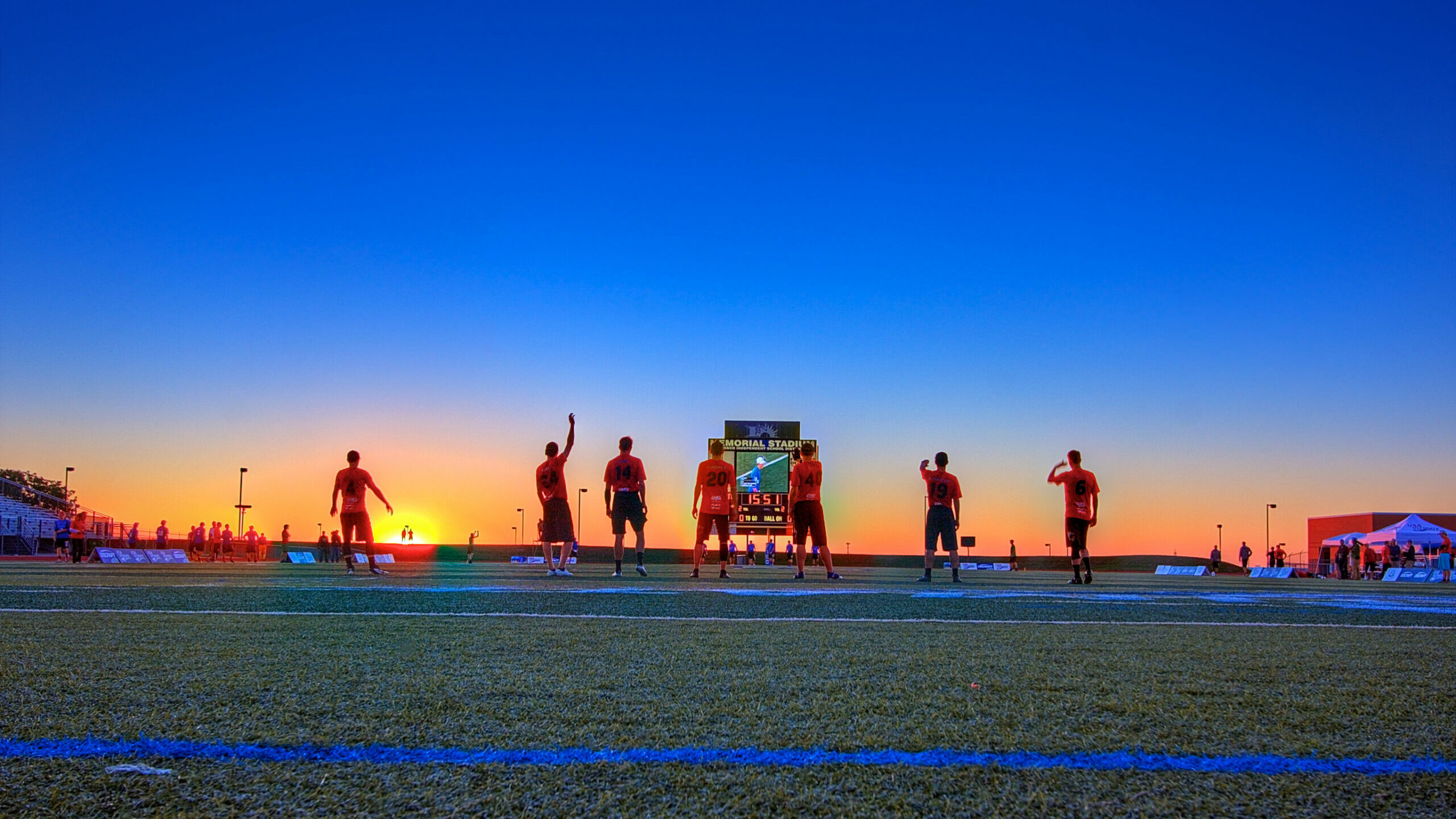
Many tournaments start at dawn, play through dusk and into the night, including the 2013 USA Ultimate National Championships in Frisco, TX.

A stadium packed with fans for the 2016 WFDF World Ultimate Championship final in London between Team USA and Colombia underscores the global popularity of ultimate.
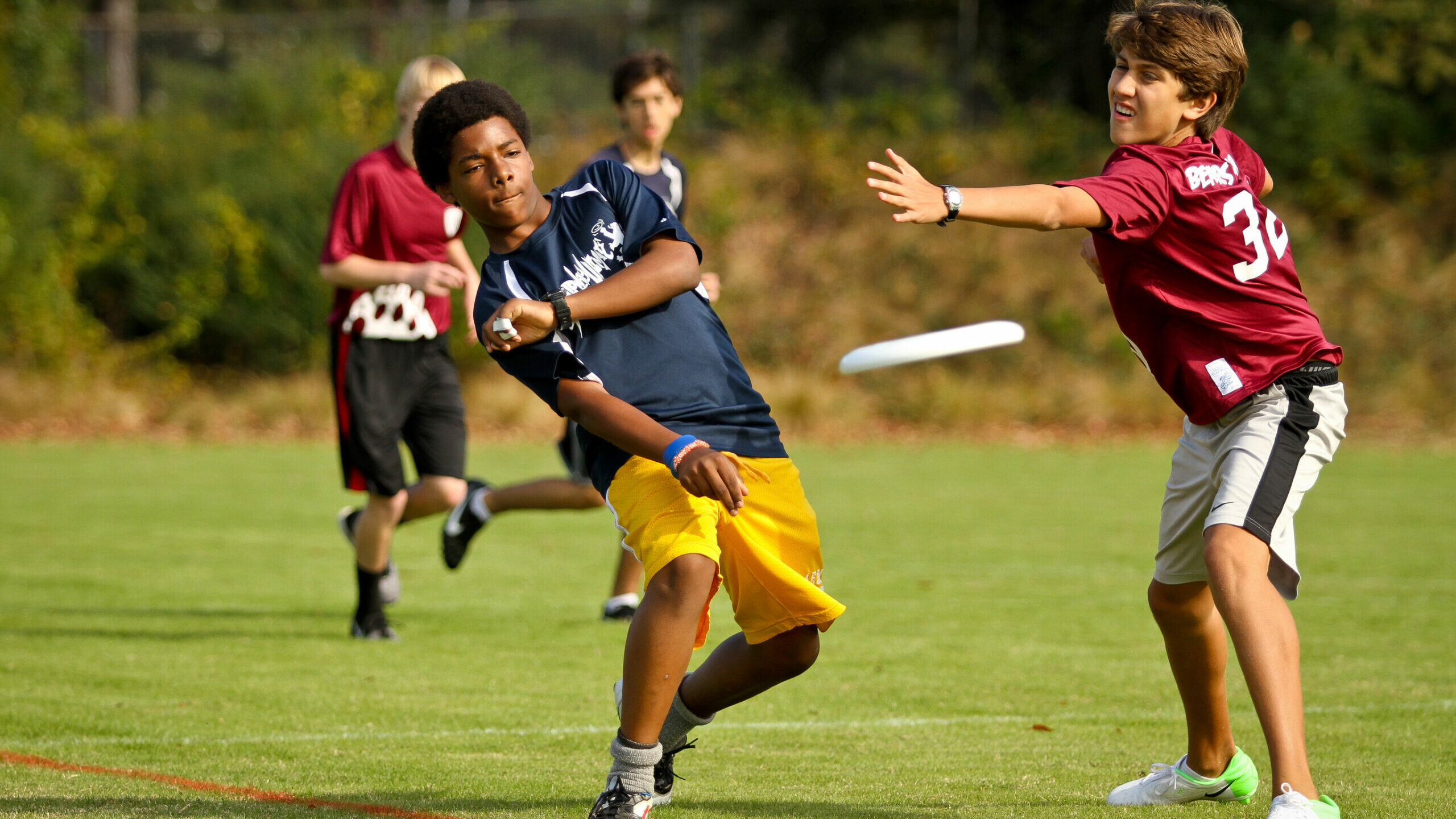
Pick-up, local city leagues and tournaments, and other grassroots, recreational competition – like this junior league in Atlanta, GA – represents the vast majority of ultimate.
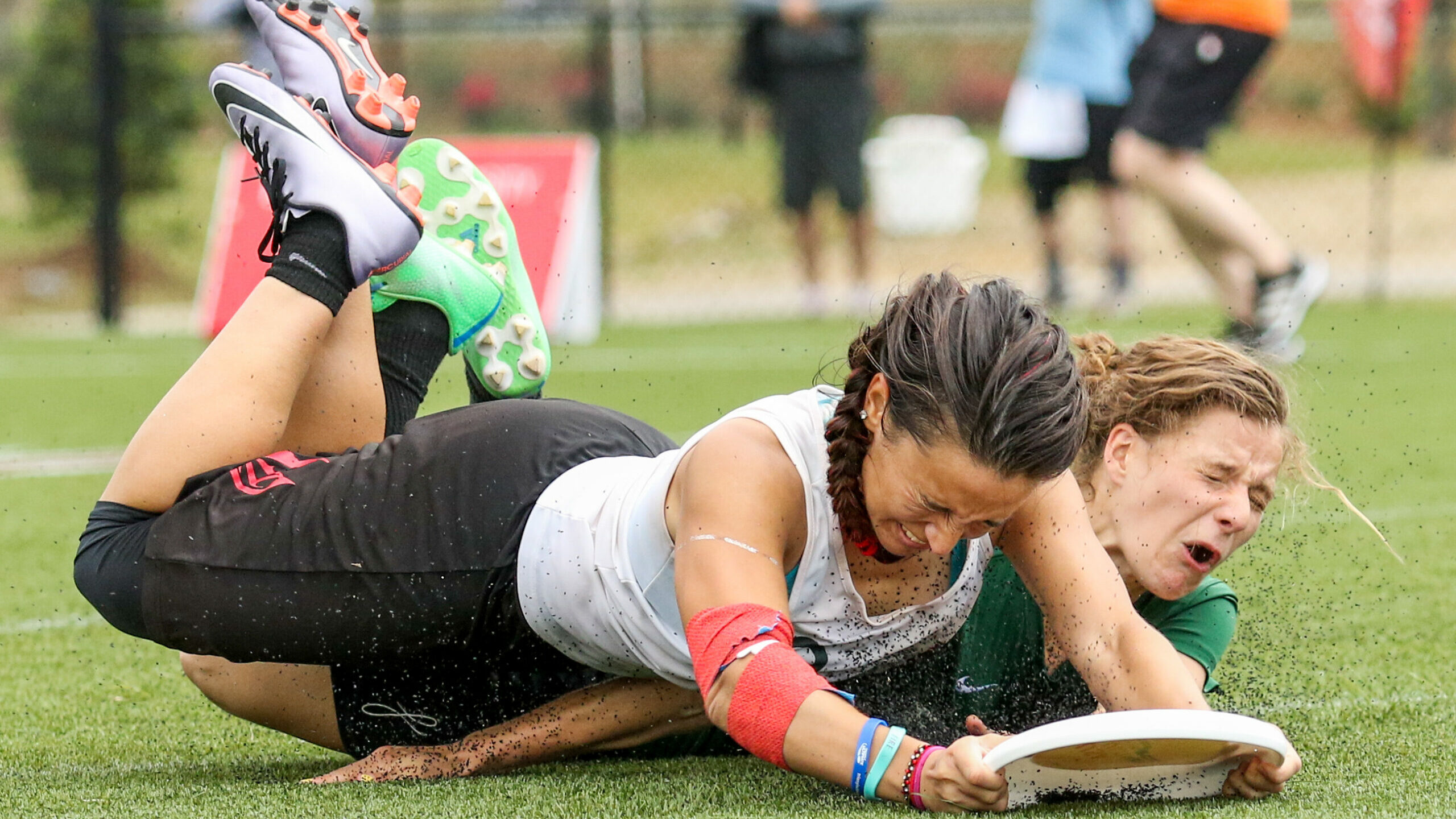
A popular pastime on campuses around the country, college ultimate has evolved into an ultra-competitive club sport with most major schools – like Stanford and Oregon (shown here at the 2016 College Championships) – fielding teams.
